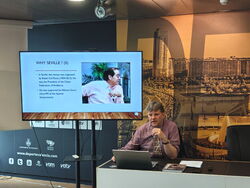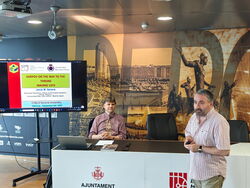On firzán, alferza, reyna and dama
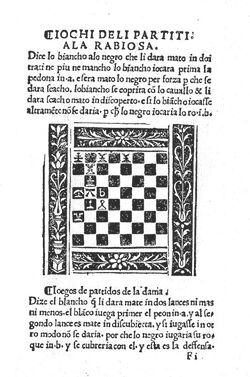
Here is a new text by José A. Garzón, whom I would like to thank. He told us about in Valencia last September.
You can find a summary in English and download the full text in Spanish in PDF format.
It was published in the book Pasiones Bibliográficas 8, which has just been released, edited by the Societat Bibliogràfica Valenciana Jerònima Galés.
Summary in English
The article examines the origin, naming, and nature of the queen in chess, arguing that the late 15th-century reform of the game was not the result of a gradual feminization of an existing piece, but rather the creation of a completely new piece, endowed with a new name, a new movement, and a new strategic role.
In ancient and medieval chess (shatranj), the piece next to the king was called ferz (or firzán, alferza) and had a very limited range of movement. In medieval Europe, under the strong influence of Jacobus de Cessolis’ moral treatise, the piece was often referred to as regina or domina in Latin, and reina in Romance languages. However, these feminine names did not bring about any change in the rules.
Chess and Film

[The original article in German can be found here. Translation with DeepL.com (free version)]
This is the sixth exhibition by the G.H.S. Chess and Culture Foundation and, as usual, it is accompanied by a catalog in exceptionally high print quality, with numerous color illustrations, primarily from the collections of Siegfried Tschinkel and Walter Rädler, as well as from the archives of the publisher Georg Schweiger on the subject.
New Moves on Old Boards
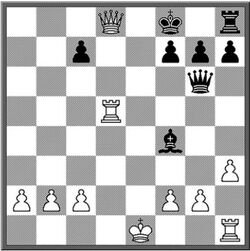
by José A. Garzón
1475–1512: The Great Transition from Medieval to Modern Chess
In this chapter from Ajedrez, arte y cultura, Spanish historian José A. Garzón recounts the fascinating half-century when medieval chess and modern chess briefly coexisted.
Between 1475 and 1512, a generation of poets, humanists, and printers transformed a slow, symbolic game into a dynamic intellectual art — a perfect reflection of the Renaissance spirit.
From Shatranj to the Valencian Revolution
For seven centuries, Europe played chess according to the Arabic shatranj: a weak “alferza” (queen) and a short-moving bishop.
Everything changed around 1475 in Valencia, where Bernat Fenollar, Narcís Vinyoles, and Françí de Castellví composed the poem Scachs d’amor (“Chess of Love”).
This extraordinary work — both allegory and manual — introduced the modern Queen, the en passant capture, the double pawn move, and even an early form of castling.
It also describes the first complete modern chess game ever recorded, in which Castellví (Mars) defeats Vinyoles (Venus) under the arbitration of Fenollar (Mercury).
Vicent and the Spread of the New Game
Twenty years later, on May 15, 1495, Valencian scholar Francesch Vicent published the Llibre dels jochs partits dels scachs en nombre de 100, the first printed treatise on modern chess.
Though the original book has been lost, Garzón reconstructed it through a manuscript discovered in Cesena: one hundred problems written in Valencian, many identical to those found later in Lucena’s Repetición de amores y arte de ajedrez (Salamanca, 1497) and Damiano’s Questo libro (Rome, 1512).
Vicent thus stands as the true father of modern chess and one of the pioneers of scientific printing in Spain.
Valencia, Cradle of Modern Chess
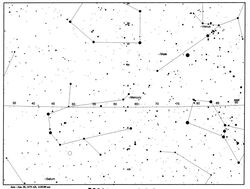
The last two articles, sent to us by José A. Garzón, are more of a summary of his research.
Once again, I would like to thank him for these various contributions.
A Historical Journey through the Earliest Books and Manuscripts
by José A. Garzón
In this 2021 article published in eHumanista, historian José A. Garzón reflects on more than two decades of research devoted to a fundamental question:
Where and when was modern chess born?
Through a meticulous study of fifteenth- and early-sixteenth-century manuscripts and printed books, Garzón demonstrates that Valencia, on Spain’s Mediterranean coast, was the true birthplace of the modern game.
From Shatranj to the Chessboard of Europe
Garzón traces the evolution of chess from its Indian ancestor, chaturanga, to its Arabic form, shatranj, which reached medieval Europe through Muslim Spain.
For centuries, the rules barely changed: pieces moved slowly, and the alferza — the forerunner of today’s queen — could advance only one square diagonally. The game mirrored the static hierarchy of the feudal world.
The Damiano Mystery
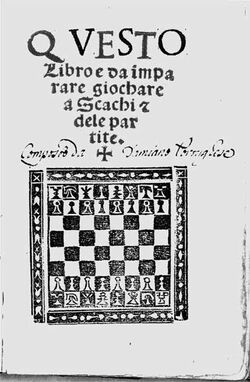
Third article by José Garzón on major changes in chess during the Renaissance.
The full text, in Spanish, can be downloaded at the end of this summary.
The Damiano Mystery
by José Garzón
Rome, 1512 – When a Portuguese Pseudonym Revealed Modern Chess
In 1512, a small bilingual book appeared in Rome, printed in Italian and Spanish: Questo libro e da imparare giocare a scacchi et de le partite. Its author called himself simply Damiano Portugese — “Damiano the Portuguese.”
That modest volume became the first true bestseller in chess history, reprinted throughout the 16th century and cited by every later theorist.
A Success Born in Spain
Modern research by José A. Garzón and others has shown that the Damiano’s contents were not original.
Its 72 problems, “subtleties,” and descriptions of the new rules all came from an earlier source: the Llibre dels jochs partits dels scachs printed in Valencia in 1495 by Francesch Vicent.
In other words, the Damiano was not an Italian invention at all, but rather the Roman transmission of the Valencian revolution — the moment when the Queen, the modern Bishop, and our familiar game of chess were born.
The Book That Changed the History of Chess
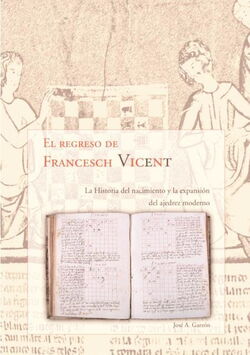
This is the second article by José Garzón.
The full text, in Spanish, can be downloaded at the end of this summary.
Valencia, 1495 – When Francesch Vicent Brought the Game into the Modern Age
by José Garzón
In 1495, in a busy Valencian printing shop run by Lope de la Roca and Pere Trincher, a small book appeared that would forever transform the world of chess: the Llibre dels jochs partits dels scachs en nombre de 100, written by Francesch Vicent, born in Segorbe and living in Valencia.
This long-lost volume was the first printed treatise on modern chess — and arguably one of the most influential books in the history of the game.
Scachs d’amor: The Poem That Gave Birth to Modern Chess
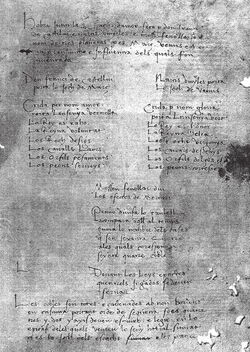
José Garzón has sent several articles to complement his lecture given in Valencia on 5 September, which was entitled: Spain as the cradle of modern chess
These fascinating articles will be published in several instalments, with a summary in English and the full text in Spanish. Here is the first one.
Many thanks to José for allowing us to publish these texts.
Valencia, 1475 — when poetry invented the Queen
by José Garzón
In the twilight of the fifteenth century, in the brilliant humanist city of Valencia, three poets — Bernat Fenollar, Narcís Vinyoles, and Francí de Castellví — created a remarkable work titled Scachs d’amor (“Chess of Love”).
Behind its courtly allegory lies nothing less than the birth certificate of modern chess.
Read more … Scachs d’amor: The Poem That Gave Birth to Modern Chess
The Stories, Games, and Intrigues of Capablanca & Alekhine
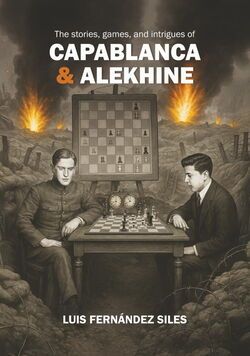
Last June [New Capablanca and Alekhine book in Spanish] Luis Fernández Siles announced the release of his book in Spanish on the relationship between Capablanca and Alekhine.
His book is now also available in English.
You can find it here:
Read more … The Stories, Games, and Intrigues of Capablanca & Alekhine
Seville 1987 – Kasparov v. Karpov

